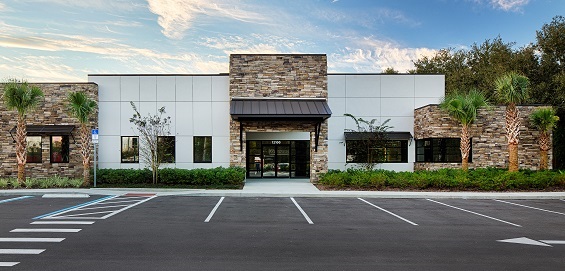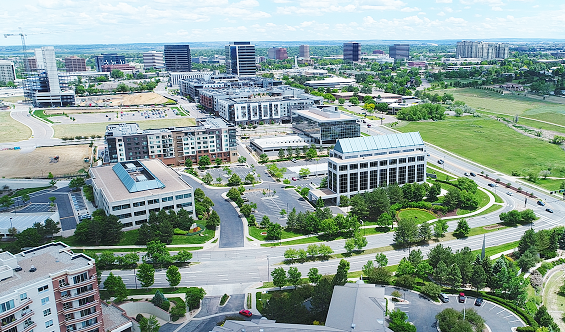Exterior – Parking, Visibility and Accessibility
The next commercial real estate fundamental to consider related to your practice are the exterior factors and how they can influence your decision. Understanding how parking, visibility and accessibility affect patient awareness, flow and profitability are important to consider when evaluating your practice. Let’s look at three exterior aspects that will influence your practice.
Parking

Another vital property consideration for your office space is parking, for both your staff and your patients. When evaluating the parking needs for your patients, you have three groups to consider: patients that are coming to your office, patients that are already inside your office, and patients that are leaving your office.
Depending on your schedule, there can be a high demand on the parking allotted to your space due to other tenants sharing your parking lot. While most Medical Office Buildings and Retail Centers have a higher parking ratio for this reason, its important to make sure the property you are considering has ample parking both for your needs and the needs of other tenants that ebb and flow throughout the day.
While some landlords allow specific tenants to have a few reserved parking spaces, the majority of landlords do not grant exclusive parking spaces for patients. This means it’s important to ensure the locations you are considering can accommodate your current practice and future growth.
Visibility and Signage
Two of the most requested property considerations for new offices are strong visibility and exterior signage, either on the building itself or on a prominent monument sign in front of the building. These requests are also two of the most important items for nearly every national retail tenant. Large, national retailers count on the visibility and signage of their locations for marketing, brand awareness and most importantly, driving business to their stores.

Since the early 2000’s, more and more healthcare providers have been seeking the same benefits that come from the positive exposure of both visibility and signage. It helps patients find your location and provides built in marketing and brand awareness.
That being said, visibility and signage usually come with a higher price tag. In the majority of commercial real estate markets, landlords charge a premium for high visibility properties, spaces and signage. Landlords understand the value that visibility and signage offer, and properties that benefit from them typically are priced higher than similar properties that don’t have the same exposure.
Even government agencies, such as real estate assessors, recognize this when valuing properties. You can expect the majority of properties that offer high visibility and signage to be assessed with higher property taxes and as a result, will have higher operating expenses. It’s important to weigh the increase in your real estate evaluation and, if applicable, evaluate if the increase in monthly rent or mortgage will benefit your practice proportionately. There are many times that the exposure and signage is worth the added expense. An alternative and potentially stronger position could be to select a property that would save you more money on a monthly basis and utilize the savings to invest in a targeted marketing strategy.
Last, there are some very specific types of practices that are 100% driven by referrals of other practitioners, where very little benefit is obtained or needed from either visibility or signage. If the vast majority or your new patients are coming at the recommendation of a referring doctor, paying the premium for signage and visibility may not be worth it.
As with most financial decisions, a detailed evaluation provided by your agent should help you weigh the difference between cost and benefit.
Access

Another main consideration alongside visibility and signage is access to your office. In other words, if a patient is driving to your office, what is the closest major intersection to your property? Where do you turn to get into your property’s parking lot? Does the property have great visibility but challenging or poor access? That problem can occur when the primary access point to a property is a location you need to turn into before you can actually see the building. When that happens, a new patient drives by the building and sees your office, but then has to pull a U-turn or make multiple turns to get back to the main access point of your location.
Thankfully, the majority of new patients will rely upon GPS and mapping software on their phone to find your office the first time. However, the easier the access is for the patient to get to your building and the more recognizable the major intersections or known landmarks are to your property, the more ideal the patient’s experience is in finding your office. Thus, the more likely patients or referral practices will recommend you.
To read the part 1 of this series, click here.
To learn more, visit our video page by clicking here.
For a free evaluation, click here.
